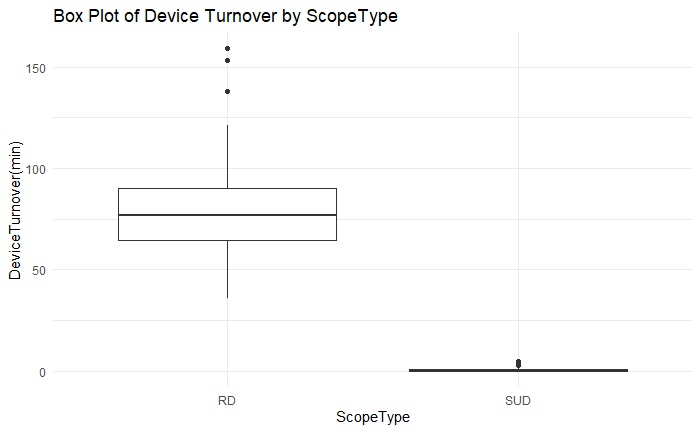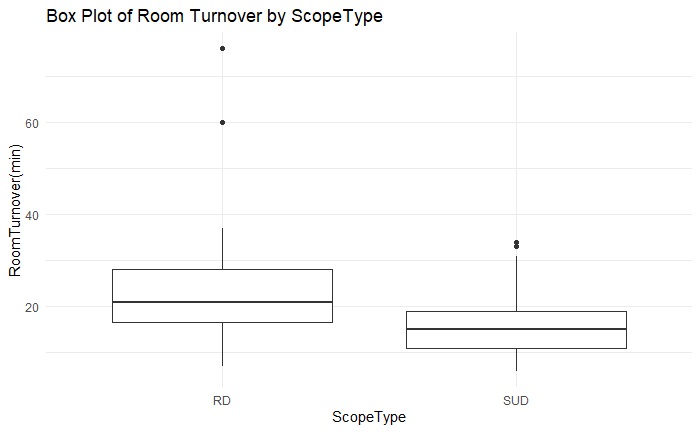Monday Poster Session
Category: Interventional Endoscopy
P3522 - Post Procedure Operational Efficiencies Associated With Single-Use Duodenoscopes Compared to Reusable Duodenoscopes: A Head-to-Head Case Series at a Regional Academic Medical Center
Monday, October 27, 2025
10:30 AM - 4:00 PM PDT
Location: Exhibit Hall
- JP
Jonh J. Pineda Bonilla, MD (he/him/his)
LewisGale Medical Center, HCA
Salem, VA
Presenting Author(s)
Jonh J.. Pineda Bonilla, MD1, Michael Cangelosi, MA, MPH2, Michael Reymundi, DO3
1LewisGale Medical Center, HCA, Salem, VA; 2Boston Scientific of America, Marlborough, MA; 3Lewis Gale Medical Center, Salem, VA
Introduction: From 2012 to 2016 reports were published on outbreaks caused by duodenoscope contamination.
In 2020 the FDA published guidelines recommending Single-Use Duodenoscopes (SUD) or Reusable Duodenoscopes (RD) that incorporate disposable components. Prior studies have evaluated the operational burden of reprocessing RD. This study aims to quantify the time differences in post procedure handling of SUD versus RD and possible economic savings.
Methods: This case series analyzed 60 ERCP procedures performed at a single center between June 2024 and November 2024. The decision to use SUD versus RD was made clinically without bias on a case-by-case basis in accordance with published guidelines. Post-ERCP observations included device turnover time (DT), room turnover time (RT), count of staff members handling the scope, and associated operations. Normal data was analyzed with ANOVA; non-normal data with Wilcoxon rank-sum. Economic valuation of differences in time observations was estimated with data from the Bureau of Labor Statistics.
Results: The analysis included 29 SUD and 31 RD cases, comprising 59 ERCP and 1 ERCP + EUS procedure (an RD case). SUD required a median of 0 minutes DT versus 77 minutes for RD (mean difference, Δ=77 minutes; Δ 95% CI: 69–84 minutes; p < 0.0001). SUD required a median RT of 15 minutes versus 21 minutes for RD (Δ=6 minutes; Δ 95% CI: 1–9 minutes; p = 0.013). SUD required 1 fewer staff member versus RD (p < 0.001). The aggregate economic value of this operational time was estimated at approximately $700 for SUD versus $1000 for RD; Δ=$279 favorable to SUD (Δ 95% CI: $100–$470; p < 0.01).
Discussion: To our knowledge, head-to-head analysis of post procedure time savings comparing SUD and RD are currently lacking and this study provides the first evidence-based data available. SUD saved on average 77 minutes of staff time through eliminating RD reprocessing operations and on average of 6 minutes faster room turnover by saving time spent suctioning the working channel of the RD, cleaning the shaft, unplugging the buttons, storing in bins, and transporting to the scope room; estimates of the economic savings are upwards of $470. Possible case volume expansion enabled by improved room turnover may further extend these economic benefits. SUD have the potential to increase operational efficiencies and savings, which should be considered by economic value analysis teams evaluating their incorporation into clinical practice.

Figure: Room Turnover by Scope Type.

Figure: Device Turnover by Scope Type.
Disclosures:
Jonh Pineda Bonilla: Boston Scientific of America – Consultant.
Michael Cangelosi: Boston Scientific of America – Employee.
Michael Reymundi indicated no relevant financial relationships.
Jonh J.. Pineda Bonilla, MD1, Michael Cangelosi, MA, MPH2, Michael Reymundi, DO3. P3522 - Post Procedure Operational Efficiencies Associated With Single-Use Duodenoscopes Compared to Reusable Duodenoscopes: A Head-to-Head Case Series at a Regional Academic Medical Center, ACG 2025 Annual Scientific Meeting Abstracts. Phoenix, AZ: American College of Gastroenterology.
1LewisGale Medical Center, HCA, Salem, VA; 2Boston Scientific of America, Marlborough, MA; 3Lewis Gale Medical Center, Salem, VA
Introduction: From 2012 to 2016 reports were published on outbreaks caused by duodenoscope contamination.
In 2020 the FDA published guidelines recommending Single-Use Duodenoscopes (SUD) or Reusable Duodenoscopes (RD) that incorporate disposable components. Prior studies have evaluated the operational burden of reprocessing RD. This study aims to quantify the time differences in post procedure handling of SUD versus RD and possible economic savings.
Methods: This case series analyzed 60 ERCP procedures performed at a single center between June 2024 and November 2024. The decision to use SUD versus RD was made clinically without bias on a case-by-case basis in accordance with published guidelines. Post-ERCP observations included device turnover time (DT), room turnover time (RT), count of staff members handling the scope, and associated operations. Normal data was analyzed with ANOVA; non-normal data with Wilcoxon rank-sum. Economic valuation of differences in time observations was estimated with data from the Bureau of Labor Statistics.
Results: The analysis included 29 SUD and 31 RD cases, comprising 59 ERCP and 1 ERCP + EUS procedure (an RD case). SUD required a median of 0 minutes DT versus 77 minutes for RD (mean difference, Δ=77 minutes; Δ 95% CI: 69–84 minutes; p < 0.0001). SUD required a median RT of 15 minutes versus 21 minutes for RD (Δ=6 minutes; Δ 95% CI: 1–9 minutes; p = 0.013). SUD required 1 fewer staff member versus RD (p < 0.001). The aggregate economic value of this operational time was estimated at approximately $700 for SUD versus $1000 for RD; Δ=$279 favorable to SUD (Δ 95% CI: $100–$470; p < 0.01).
Discussion: To our knowledge, head-to-head analysis of post procedure time savings comparing SUD and RD are currently lacking and this study provides the first evidence-based data available. SUD saved on average 77 minutes of staff time through eliminating RD reprocessing operations and on average of 6 minutes faster room turnover by saving time spent suctioning the working channel of the RD, cleaning the shaft, unplugging the buttons, storing in bins, and transporting to the scope room; estimates of the economic savings are upwards of $470. Possible case volume expansion enabled by improved room turnover may further extend these economic benefits. SUD have the potential to increase operational efficiencies and savings, which should be considered by economic value analysis teams evaluating their incorporation into clinical practice.

Figure: Room Turnover by Scope Type.

Figure: Device Turnover by Scope Type.
Disclosures:
Jonh Pineda Bonilla: Boston Scientific of America – Consultant.
Michael Cangelosi: Boston Scientific of America – Employee.
Michael Reymundi indicated no relevant financial relationships.
Jonh J.. Pineda Bonilla, MD1, Michael Cangelosi, MA, MPH2, Michael Reymundi, DO3. P3522 - Post Procedure Operational Efficiencies Associated With Single-Use Duodenoscopes Compared to Reusable Duodenoscopes: A Head-to-Head Case Series at a Regional Academic Medical Center, ACG 2025 Annual Scientific Meeting Abstracts. Phoenix, AZ: American College of Gastroenterology.

